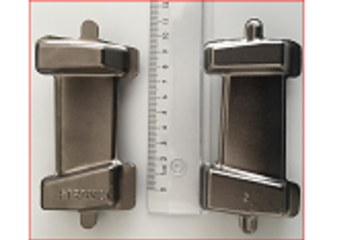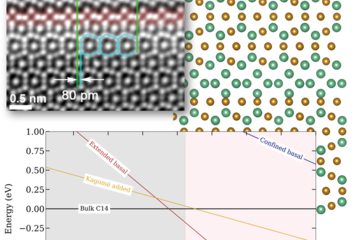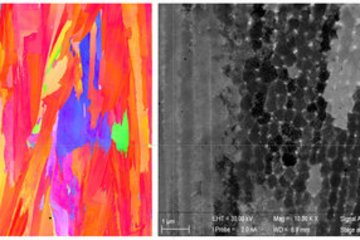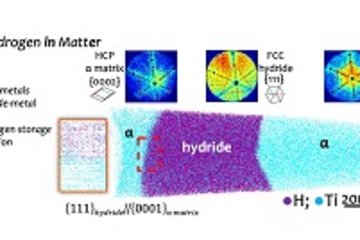All genres
2421.
Thesis - PhD
Molecular Dynamics Studies of Thermodynamical Consistency and Non-locality of Effective Temperature. Dissertation, Aachen Institute for Advanced Study in Computational Engineering Science (AICES), RWTH Aachen University, Aachen, Germany (2014)
2422.
Thesis - PhD
The inheritance of different microstructures found after hot rolling on the properties of a completely annealed dual phase steel. Dissertation, Fakultät für Georessourcen und Materialtechnik, RWTH Aachen, Aachen, Germany (2014)
2423.
Thesis - PhD
Feasibility study on local elastic strain measurements with an EBSD pattern cross correlation method in elastic-plastically deforming material. Dissertation, RWTH Aachen, Aachen, Germany (2014)
2424.
Thesis - PhD
Co-deformation of Amorphous CuZr/Nanocrystalline Cu Multilayers. Dissertation, Fakultät für Maschinenbau, Ruhr-Universität Bochum, Bochum, Germany (2014)
2425.
Thesis - PhD
Fe–Mn–Pd maraging steels for biodegradable implant applications. Dissertation, Materials Science, ETH Zurich, Zürich, Switzerland (2014)
2426.
Thesis - PhD
Atomic scale investigation of clustering and nanocrystallization in FeSiNbB(Cu) soft magnetic amorphous alloys. Dissertation, RWTH-Aachen, Aachen, Germany (2014)
2427.
Thesis - PhD
Structure-property-relations of cuticular photonic crystals evolved by different beetle groups (Insecta, Coleoptera). Dissertation, RWTH-Aachen, Aachen, Germany (2014)
2428.
Thesis - PhD
On the role of dislocation transport in the constitutive description of crystal plasticity. Dissertation, RWTH Aachen, Aachen, Germany (2013)
2429.
Thesis - PhD
Pulsed Plasma Nitriding - Effect on Hydrogen Embrittlement and Hydrogen Adsorption and Diffusion. Dissertation, Norwegian University of Science and Technology NTNU, Trondheim, Norway (2013)
2430.
Thesis - PhD
Lattice Boltzmann modeling of advection-diffusion-reaction equations in non-equilibrium transport processes. Dissertation, RWTH Aachen, Aachen, Germany (2013)
2431.
Thesis - PhD
A constitutive model of twin nucleation and deformation twinning in High-Manganese Austenitic TWIP steels. Dissertation, RWTH Aachen, Aachen, Germany (2013)
2432.
Thesis - PhD
Elastic and plastic properties of fcc Fe–Mn based alloys. Dissertation, RWTH Aachen, Aachen, Germany (2013)
2433.
Thesis - PhD
Mechanics in Steel through Microscopy. Dissertation, TU Delft, Delft, The Netherlands (2013)
2434.
Thesis - PhD
Relation between microstructure and mechanical properties of a low-alloyed TRIP steel. Dissertation, RWTH Aachen, Aachen, Germany (2013)
2435.
Thesis - PhD
On the growth and mechanical properties of non-oxide perovskites and the spontaneous growth of soft metal nanowhiskers. Dissertation, RWTH Aachen, Aachen, Germany (2013)
2436.
Thesis - PhD
Grain boundary motion in polycrystalline materials. Dissertation, Ruhr-University Bochum, Bochum, Germany (2013)
2437.
Thesis - PhD
Characterization of crystal defects during molecular dynamics simulations of mechanical deformation. Dissertation, Ruhr-University Bochum, Bochum, Germany (2012)
2438.
Thesis - PhD
Discrete dislocation dynamics simulations of dislocation-low angle grain boundary interactions. Dissertation, RWTH Aachen, Aachen, Germany (2012)
2439.
Thesis - PhD
Nanoscale austenite reversion through partitioning, segregation and kinetic freezing. Dissertation, RWTH Aachen, Aachen, Germany (2012)
2440.
Thesis - PhD
Towards designing elastic and magnetic properties of Co-based thin film metallic glasses. Dissertation, RWTH Aachen, Aachen, Germany (2012)









